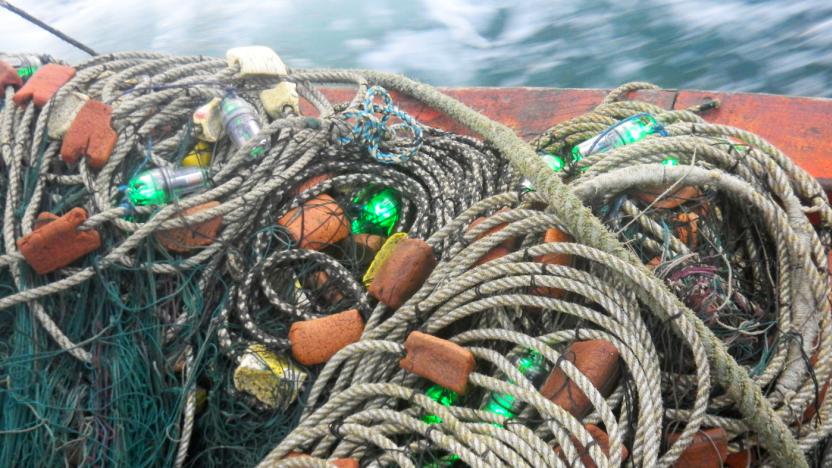seaturtles
Latest

LED-lit fishing nets save sea turtles from getting caught
Sometimes, it's the simplest tech that makes the biggest difference. University of Exeter researchers have crafted fishing nets with evenly distributed green LED lights (one every 33 feet) that warn sea turtles away without spooking fish. While scientists have yet to nail the exact reason the lights steer the turtles clear, one researcher tells Tech Insider that it's likely just a matter of visibility -- the turtles stand a better chance of seeing the net in time to avoid it. It's not only quite effective in early tests (it reduced green turtle deaths by 64 percent), but relatively cheap at $100 to cover a giant 1,640ft net with 50 lights.

Heroes in a half shell: autonomous robot sea turtles in development
Sure you could have a robot assist you around the home, or even one that'll make factories friendlier, but we'll opt for a robot sea turtle any day of the week. The Swiss folks over at ETH Zurich are working on making that a reality with the Naro-Tartaruga, a turtle-inspired machine that would swim efficiently while carrying cargo in its shell. It's currently a cylindrical aluminum vessel with a couple of flippers, but concept designs include that totally bad-ass bot in the image above. The turtle-bot has a top speed of over 7 knots, so it'll handily beat any real sea turtle in a race, and the big torso has enough space for battery and sensors that are necessary for autonomous function. The fins on the turtle have a fully three-dimensional mechanism -- there are three actuators per fin, and each actuate the fin axle independently. The end goal is for the development of underwater autonomous vehicles, which will hopefully bring us one step closer to SeaQuest DSV. In the meantime, we'd like one just so we can freak the hell out of our cats.

Google dives deep to bring underwater photos of the Great Barrier Reef this September
Your next trip to the Great Barrier Reef could be from the comfort of your home now that Google's partnered with Catlin SeaView Survey, the University of Queensland's Global Change Institute and the Underwater Earth organization to document this amazing ecosystem. Equipped with a special underwater camera capable of withstanding depths of 328 feet, the survey aims to photograph 50,000 shots in 360-degree panoramic view and incorporate them into Google Earth and Google Maps. Dubbed "Google SeaView," it seeks to open opportunities for increased conservation as well as a free look for wanna-be world travelers who can't afford a plane ticket down under. As an added perk, the collected data may also be used to help future ship captains navigate through the treachery of the intricate coral highways. Check past the break for more info on the survey and plenty of footage teeming with aquatic wildlife.


